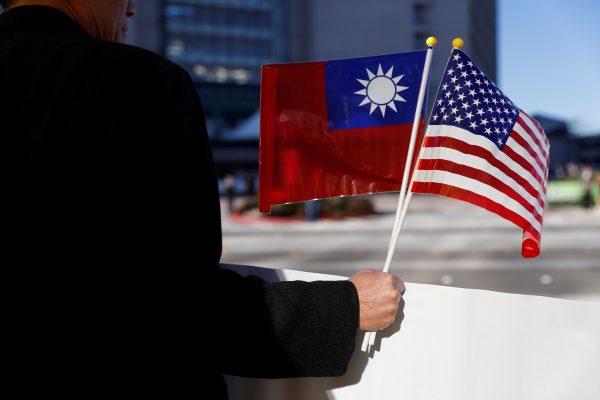Two US Navy Ships Navigate Taiwan Strait for First Time Since Trump Administration Began
Observers believe that the recent actions aim to deter the Chinese regime’s aggression towards Taiwan and uphold freedom of navigation in the Taiwan Strait.
For the first time since President Donald Trump assumed office in January, two U.S. navy ships sailed through the Taiwan Strait this week. Analysts suggest that this move illustrates the continuity of U.S. policy in the region.
The U.S. Navy confirmed that the Arleigh Burke-class guided-missile destroyer USS Ralph Johnson and the Pathfinder-class oceanographic survey ship USNS Bowditch navigated through the Taiwan Strait from north to south between Feb. 10 and 12.
According to Navy Commander Matthew Comer of the U.S. military’s Indo-Pacific Command, “The transit occurred through a corridor in the Taiwan Strait that is beyond any coastal state’s territorial seas. Within this corridor all nations enjoy high-seas freedom of navigation, overflight, and other internationally lawful uses of the sea related to these freedoms.”
While U.S. ships routinely traverse the Taiwan Strait, Ou Si-Fu, a research fellow at Taiwan’s Institute for National Defense and Security Research, noted that the presence of two warships this time instead of one sends a stronger message.
Ou explained, “The Chinese regime already considers the Taiwan Strait its territorial sea. But the international community recognizes it as an international water.”
He added, “It shows that Trump wanted to concentrate U.S. forces to deal with China and the United States attaches great importance to the security of the Taiwan Strait.”
He continued, “Moreover, it’s a way to protect the right of free navigation and to uphold stability in the Taiwan Strait, a crucial interest of the United States.”
These actions provoked a strong reaction from China, Ou added.
The Eastern Theater Command of the Chinese regime’s military—the People’s Liberation Army (PLA)—released a statement on Feb. 12, stating that they “deployed naval and air forces to monitor the entire passage of the US vessels,” and that the U.S. actions “sent the wrong signals and increased security risks.”
Zhu Fenglian, a spokesperson for the Chinese regime’s Taiwan Affairs Office, expressed China’s firm opposition to the U.S. actions.
During a press briefing, Taiwan Defense Ministry spokesperson Sun Li-fang acknowledged the passing of the U.S. navy ships and stated that allied nations are concerned about regional peace in the Taiwan Strait as well as demonstrating freedom of navigation in the region.
Taiwan, officially known as the Republic of China (ROC), is the sole remaining territory of the republic established in 1911 in China. After losing the Chinese civil war to the communists in 1949, the ROC’s government retreated to Taiwan. Meanwhile, the Chinese Communist Party (CCP) established the People’s Republic of China (PRC) in mainland China. Although the CCP claims sovereignty over Taiwan, it has never governed the island and has not ruled out using force to annex it.
The Chinese regime also asserts ownership of the strategically significant Taiwan Strait. In recent years, the PLA has conducted frequent military exercises in the region to intimidate Taiwan.
Taiwan President Lai Ching-te has rejected Beijing’s sovereignty claims, emphasizing that the future of Taiwan should be determined by the Taiwanese people.

A demonstrator holds flags of Taiwan and the United States in support of Taiwanese President Tsai Ing-wen during a stop-over after her visit to Latin America in Burlingame, Calif., on Jan. 14, 2017. Stephen Lam/Reuters
Chung Chih-tung, an assistant research fellow at Taiwan’s Institute for National Defense and Security Research, supports the resolution, stating that “it highlighted the absurdity of the unfair and unjust treatment that the Republic of China (Taiwan), as a sovereign and independent country, is facing in the international arena due to the CCP’s oppression.”
Contributions to this report were made by Luo Ya and Reuters.





